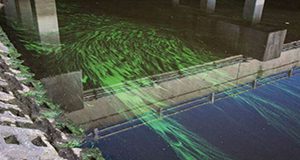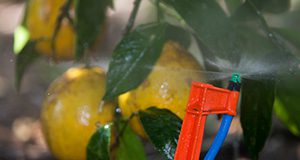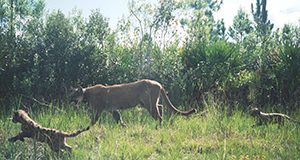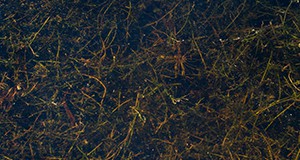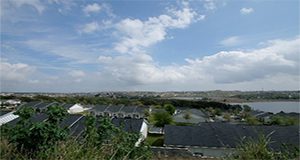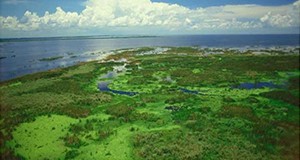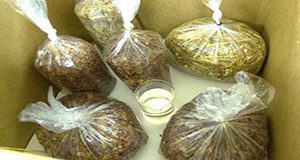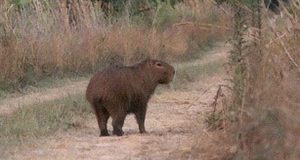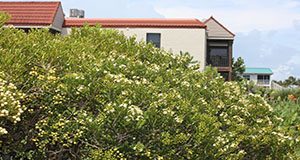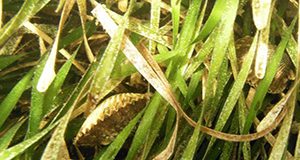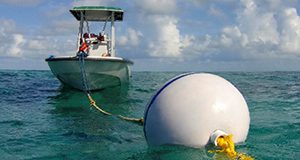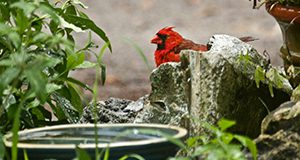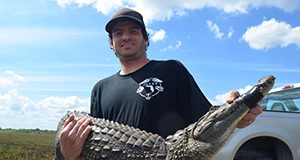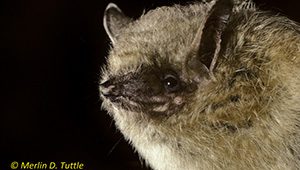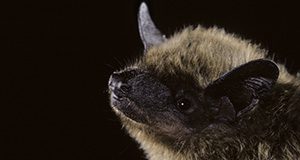Microscopic algae in oceans and inland waters sometimes grow to excessive levels called “blooms.” Warmer water temperatures and increased nutrient levels exacerbate blooms, and when nutrients are high, temperature increases of just a few degrees cause exponential increases of algae and blooms. This 4-page fact sheet written by Karl Havens and published by the Florida Sea Grant College Program and UF/IFAS Extension explains why algal blooms can be harmful and provides advice for communities seeking to reduce nutrient levels in their lakes, streams, and other bodies of water. In a warmer future, harmful algal blooms will be much more challenging to control than they are today.
http://edis.ifas.ufl.edu/sg153
Category: Environment
Handbook of Florida Water Regulation: 2016 Florida Water Bill
This handbook is designed to provide an accurate, current, and authoritative summary of the principal federal and state laws that directly or indirectly relate to agriculture. Written by Tatiana Borisova, Michael T. Olexa, and Jarrett Davis and published by the UF/IFAS Food and Resource Economics Department, this chapter of the handbook provides a basic overview of the Florida Water Bill.
http://edis.ifas.ufl.edu/fe1018
Handbook of Florida Water Regulation: Florida Springs and Aquifer Protection Act
This handbook is designed to provide an accurate, current, and authoritative summary of the principal federal and state laws that directly or indirectly relate to agriculture. Written by Tatiana Borisova, Michael T. Olexa, and Jarrett Davis and published by the UF/IFAS Food and Resource Economics Department, this chapter of the handbook provides a basic overview of the Florida Springs and Aquifer Protection Act.
http://edis.ifas.ufl.edu/fe1019
Did I See a Panther?
Florida panthers can sometimes be confused with bobcats, dogs, and coyotes. This 4-page fact sheet written by Diane J. Episcopio, Elizabeth F. Pienaar, and Martin B. Main and published by the UF/IFAS Department of Wildlife Ecology and Conservation describes how to identify panthers by their physical characteristics and their tracks and explains what to do if you have seen a panther.
edis.ifas.ufl.edu/uw144
Efficacy of Herbicide Active Ingredients Against Aquatic Weeds
Weed control is often a critical component of aquatic vegetation management in Florida waters. While physical, mechanical, and biological controls are utilized where they are feasible, herbicides are the primary tool used to control many troublesome species. This document answers some common questions and provides efficacy information for all herbicide active ingredients labeled for aquatic use in Florida. Written by S. F. Enloe, M. D. Netherland, W. Haller, and K. Langeland, and published by the UF/IFAS Agronomy Department, revised February 2018.
http://edis.ifas.ufl.edu/ag262
Securing Pet Food from Florida Black Bears and Coyotes

The Florida black bear and the coyote are both prevalent throughout the state of Florida. The number one cause of human-wildlife conflict for these two species are food attractants, including pet food. This 2-page fact sheet written by Kelley C. Anderson and Elizabeth F. Pienaar and published by the UF/IFAS Department of Wildlife Ecology and Conservation explains how to secure pets and pet food against both the Florida black bear and the coyote and keep people, pets, and wildlife safe.
edis.ifas.ufl.edu/uw437
How Do Floridians Perceive Their Role in Protecting Water Quality and Quantity Through Landscape Practices?
Florida is faced with challenges in protecting both water quality and quantity; the state’s incredible number of home landscapes can positively or negatively impact water depending on how landscapes are managed. In 2016, Florida residents with irrigated landscapes were surveyed in order to create more effective Extension programs regarding landscape best management practices. This 4-page document discusses the results of this survey. Written by Laura A. Sanagorski Warner, Alexa J. Lamm, and Anil Kumar Chaudhary and published by the UF/IFAS Department of Agricultural Education and Communication, January 2018.
http://edis.ifas.ufl.edu/wc293
Handbook of Florida Water Regulation: Soil and Water Conservation Districts
This 2-page fact sheet written by Michael T. Olexa, Tatiana Borisova, and Jarrett Davis and published by the UF/IFAS Food and Resource Economics Department is part of a handbook designed to provide an accurate, current, and authoritative summary of the principal federal and Florida state laws that govern agriculture. This chapter provides an overview of soil and water conservation districts (SWCDs), explains their purpose and structure, and describes some of the agency partnerships SWCDs make.
edis.ifas.ufl.edu/fe1017
D.I.Y. FunGuide: Grow Your Own Oyster Mushrooms at Home
Oyster mushrooms are commonly found on hardwoods throughout the north temperate zone; they are edible and have many nutritious qualities. This 5-page document describes how you can grow your own oyster mushrooms at home. Written by Chih-Ming Hsu, Khalid Hameed, Van T. Cotter, and Hui-Ling Liao and published by the UF/IFAS Department of Soil and Water Sciences, January 2018.
http://edis.ifas.ufl.edu/ss662
Isolation of Mother Cultures and Preparation of Spawn for Oyster Mushroom Cultivation
This 6-page publication details the cultivation of oyster mushrooms from mother culture isolation to spawn preparation. This protocol can be used by both homeowners and commercial cultivators. Written by Chih-Ming Hsu, Khalid Hameed, Van T. Cotter, and Hui-Ling Liao and published by the UF/IFAS Department of Soil and Water Sciences, January 2018.
http://edis.ifas.ufl.edu/ss663
Status of Capybaras (Hydrochoerus hydrochaeris Rodentia: Hydrochaeridae) and Potential for Establishment in Florida
Would you know what to do if you saw a two-foot-tall, 100-pound exotic rodent strolling through your neighborhood? It’s highly unlikely, but, depending on your location, not absolutely impossible. Capybaras, the world’s largest rodents, are native to South America but have been spotted in the state of Florida and may have potential to establish populations here. This 5-page fact sheet written by Brandon Parker, C. Jane Anderson, Christina Romagosa, Samantha Wisely, Daniel Pearson, John Seyjagat, and Katherine Ashley Sayler and published by the UF/IFAS Department of Wildlife Ecology and Conservation describes capybaras, explains how they got to Florida, and shows where the semiaquatic, herbivorous rodents have been sighted so far.
edis.ifas.ufl.edu/uw438
Joewood (Jacquinia keyensis): Identification and Uses
Jacquinia keyensis, known commonly as joewood, is listed as a threatened species by the state of Florida, and is most commonly found in the Florida Keys. This 8-page document discusses the identification and uses of joewood. Written by Stephen H. Brown, Marc S. Frank, and Andrew K. Koeser and published by the UF/IFAS Department of Environmental Horticulture, January 2018.
http://edis.ifas.ufl.edu/ep548
Understanding Good Irrigation and Fertilization Behaviors Among Households Using Landscape Design Features
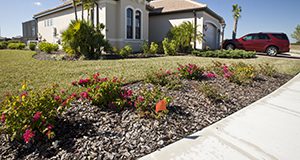
With increasing concerns over water resources in Florida, Extension can target households with irrigated landscapes to encourage practices that protect water quality and quantity. This document compares the water conservation education needs of different Florida household subgroups. Written by Anil Kumar Chaudhary and Laura A. Warner and published by the UF/IFAS Department of Agricultural Education and Communication, January 2018.
http://edis.ifas.ufl.edu/wc292
Responsible Boating Protects Seagrass Meadows
Florida leads the country in the number of registered recreational watercraft, with between 867,463 and 921,834 vessels in the state. With so many people out enjoying Florida’s waters, there is significant risk of damage to sensitive coastal habitats such as seagrass meadows. This 4-page fact sheet written by Savanna Barry, Ana Zangroniz, and Joy Hazell and published by the UF/IFAS Florida Sea Grant College Program explains the importance of protecting seagrass meadows by responsible boating and gives tips to boaters about how to practice seagrass-safe boating.
http://edis.ifas.ufl.edu/sg151
Responsible Boating Protects Coral Reefs
Florida is often referred to as the boating capital of the nation, with more than 930,000 registered vessels. Florida’s numerous natural resources such as mangroves, seagrasses, estuaries and coral reefs are a major draw to resident and visiting boaters alike. Outdoor activities associated with boating, such as birding, fishing, swimming, snorkeling, and diving, contribute to the state’s economy. However, increased traffic on the water can bring potential risks, particularly to sensitive ocean bottom habitats such as coral reefs and seagrasses. This 4-page fact sheet written by Ana Zangroniz, Savanna Barry, and Joy Hazell and published by the UF/IFAS Florida Sea Grant College Program gives an introduction to the corals and coral reefs of Florida, provides ecological and economic information, and lists simple steps to ensure that safe boating practices reduce physical impacts on coral reefs.
http://edis.ifas.ufl.edu/sg152
Building for Birds Evaluation Tool: Built Areas as Habitat for Forest Birds
A variety of forest birds will use trees and shrubs in built areas as breeding, wintering, and stopover habitat. Scientists have created an online tool to help these birds and the people who appreciate them. This 20-page fact sheet written by Mark Hostetler and Jan-Michael Archer and published by the UF/IFAS Department of Wildlife Ecology and Conservation describes the online tool and shows how it can help forest birds.
edis.ifas.ufl.edu/uw418
Everglades Invasive Reptile and Amphibian Monitoring Program: Summary of the First Five Years
South Florida has more nonnative species of reptiles and amphibians than anywhere else in the world. Some of these species become invasive and harm the environment, economy, and/or public health. Once populations are widely established, management becomes expensive, long-term, and often ineffective. Early detection and rapid response offers the best chance to contain or eradicate populations before they can spread and become unmanageable. Toward that end, the Everglades Invasive Reptile and Amphibian Monitoring Program provides a scientific framework for monitoring invasive reptiles and amphibians in south Florida. It also monitors native reptiles, amphibians, and mammals to assess impacts of invasive species.
This 5-page fact sheet written by Rebecca G. Harvey, Mike Rochford, Jennifer Ketterlin Eckles, Edward Metzger III, Jennifer Nestler, and Frank J. Mazzotti and published by the Wildlife Ecology and Conservation Department lists the objectives, activities, and accomplishments of the program over its first five years, and it describes some ways Floridians and visitors to the state can help with the effort.
http://edis.ifas.ufl.edu/uw431
Florida's Bats: Southeastern myotis
The southeastern myotis is a small forest- and cave-dwelling bat that lives in Florida. Unlike many other species in Florida, southeastern myotis have long hairs between their toes that extend past their claws. You can learn to distinguish the southeastern myotis from other bats commonly found in Florida in this three-page fact sheet written by Emily Evans, Terry Doonan, and Holly Ober and published by the UF/IFAS Department of Wildlife Ecology and Conservation.
http://edis.ifas.ufl.edu/uw433
Florida's Bats: Tricolored Bat
The tricolored bat, formerly known as the eastern pipistrelle, is the smallest bat found in the state of Florida. It weighs just about as much as a nickel and a penny. Because of their small size and erratic flight pattern, tricolored bats are often mistaken for moths when seen in flight from a long distance away. You can learn to distinguish the tricolored bat from other bat species found in Florida with this three-page fact sheet written by Emily Evans, Terry Doonan, and Holly Ober and published by the UF/IFAS Department of Wildlife Ecology and Conservation.
http://edis.ifas.ufl.edu/uw434
Florida's Bats: Evening Bat
The evening bat is a relatively small, forest-dwelling bat. Evening bats are dark brown to yellow with short brown ears and a broad, hairless muzzle. This species looks like the big brown bat but is noticeably smaller. Learn to distinguish evening bats from big brown bats and other common Florida species of bats in this three-page fact sheet written by Emily Evans, Terry Doonan, and Holly Ober and published by the UF/IFAS Department of Wildlife, Ecology and Conservation.
http://edis.ifas.ufl.edu/uw435
